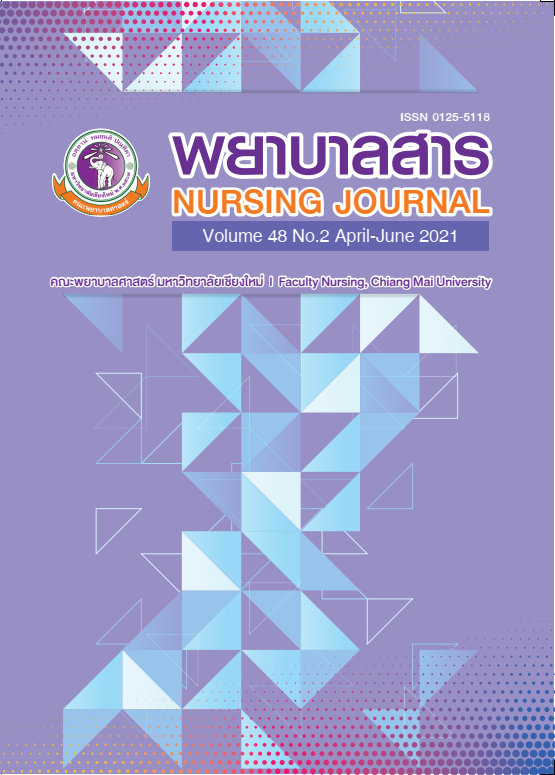Role Practices and Barriers to Practice Among Infection Control Nurses in Community Hospitals
Keywords:
Infection, The roles of infection controlling nurses, Practice, Barrier, Community hospitalAbstract
Infection Control Nurses (ICNs) in community hospitals are crucial for the successful prevention of hospital-associated infections (HAIs). This descriptive study aimed to determine practices and barriers in practices based on ICN roles in community hospitals. The sample included 301 ICNs from community hospitals. The data collection tool was a self-administered questionnaire which consisted of three parts: general information, practices according to roles, and obstacles in practices. Data were collected from November 2016 to January 2017. Two hundred and fifty-seven questionnaires were received, with a response rate of 85.38%. Data were analyzed using descriptive statistics.
The study results showed that the community hospital ICNs practiced 87.9% of all activities under nine possible roles which included surveillance of HAIs, outbreak investigation and control, education, counselling, management, employee health, hospital environmental control, community coordination, and research. The activities with over 90% engagement from ICNs were: counselling (98.1%), employee health (97.8%), management and hospital environmental control (93.1%), and education (91.6%). The activities with more than 80% engagement from ICNs were surveillance of HAIs (88.1%) and outbreak investigation and control (83.9%). ICNs were least active with regards to conducting research (35.9%). Obstacles faced by ICNs in all roles was work overload (28.8-70.4%), which prevented them from working effectively in their roles. Other obstacles were hospital personnel who did not comply with infection prevention guidelines (66.9%) and lack of awareness of their health (62.3%).
ICNs should be appropriately assigned jobs according to their roles in prevention of HAIs so that they can work effectively. Support should be given to them to obtain updated knowledge so that they feel confident in their work. Additionally, hospital personnel should continuously be educated about infection prevention and control.
References
Haley, R. W., Culver, D. H., White, J. W., Morgan, W. M., Emori, T. G., Munn, V. P., & Hooton, T. M. (1985). The efficacy of infection surveillance and control programs in preventing nosocomial infections in US hospitals. American Journal of Epidemiology, 121(2), 182-205.
Murphy, C. L., & McLaws, M. L. (1999). Who coordinates infection control programs in Australia? American journal of infection control, 27(3), 291-295.
Murphy, C. L., & McLaws, M. L. (2000). Australian Infection Control Association members' use of skills and resources that promote evidence-based infection control. American journal of infection control, 28(2), 116-122.
Plowman, R., Graves, N., Griffin, M. A. S., Roberts, J. A., Swan, A. V., Cookson, B., & Taylor, L. (2001). The rate and cost of hospital-acquired infections occurring in patients admitted to selected specialties of a district general hospital in England and the national burden imposed. Journal of Hospital Infection, 47(3), 198-209.
Pumart, P., Thammalikitkul, V., Prakongsai, P., Potha, T., Ruipaibool, A., & Limwatananon, S. (2012). Health and economic impacts from multidrug resistant in Thailand, Health System Research, 3(3), 320-360. (In Thai)
Vrijens, F., Hulstaert, F., Devriese, S., & Van de Sande, S. (2012). Hospital-acquired infections in Belgian acute-care hospitals: An estimation of their global impact on mortality, length of stay and healthcare costs. Epidemiology and Infection, 140(1), 126-136.
Worakitkasemkul, S. (2010). Research methods in social and behavioral sciences (2nd ed.). Udon Thani: Augsorn Printing. (In Thai)
Yamane, T. (1973). Statistics: An introductory analysis (2nd ed.). New York: Harper & Row.
Downloads
Published
How to Cite
Issue
Section
License
บทความที่ได้รับการตีพิมพ์เป็นลิขสิทธิ์ของวารสารพยาบาลสาร
ข้อความที่ปรากฏในบทความแต่ละเรื่องในวารสารวิชาการเล่มนี้เป็นความคิดเห็นส่วนตัวของผู้เขียนแต่ละท่านไม่เกี่ยวข้องกับมหาวิทยาลัยเชียงใหม่ และคณาจารย์ท่านอื่นๆในมหาวิทยาลัยฯ แต่อย่างใด ความรับผิดชอบองค์ประกอบทั้งหมดของบทความแต่ละเรื่องเป็นของผู้เขียนแต่ละท่าน หากมีความผิดพลาดใด ๆ ผู้เขียนแต่ละท่านจะรับผิดชอบบทความของตนเองแต่ผู้เดียว






